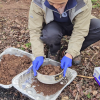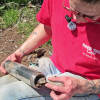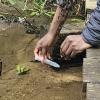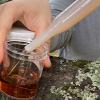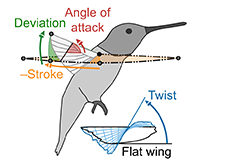Active
Active
This research team will use hand-held camera imagery and drone images of outdoor landscapes to build 3D models using state-of-the-art techniques in computer vision and computer graphics, to support land management goals.
Active
This study investigates the dynamic relationship between acorns infested by insect larvae, how pathogens regulate these larvae, and how pile burning affects them all.
Active
This project investigates how biogeochemical changes in soils (organic matter, nutrient availability, and soil-borne metals). are influenced by fire conditions, ecosystem type, and geologic parent material.
Active
This project aims to evaluate how different fuel management strategies affect seed viability in chaparral and oak woodland habitats.
Active
The aim of this project is to answer fundamental questions about the retention of geomorphologically- and biogeochemically-relevant radionuclide tracers in soils before and after prescribed fire.
Active
This project ultimately aims to develop novel tools to better measure smoke from prescribed fire and provide policy recommendations that would facilitate greater use of beneficial fire as a forest management tool.
Active
This research aims to measure how nutrient and metal concentrations vary as a function of distance from the burn piles, and across time after the burns took place in March 2024.
Active
This project investigates how pile burning affects soil microbial communities and their effect on carbon and nitrogen cycling. This project is funded by an A.W. Mellon Foundation grant.
Active
This project is part of the Motus Wildlife Tracking System (Motus), an international collaborative research network that leverages radio signaling to track and monitor migratory animals.
Active
This study examines the western treehole mosquito Aedes sierrensis and its facultative parasite Lambornella clarki as a model system for studying climate change effects on host-parasite interactions.



